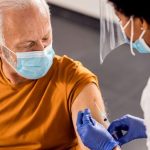
There’s been plenty of scientific debate about whether vaping is safer than tobacco, and whether it may help some people stop smoking. According to a recent Cochrane Review analysis of 78 studies, electronic cigarettes show more success in helping people quit smoking than traditional nicotine-replacement therapies, such as nicotine patches and gums. “The most important finding from our recent review update is that for the first time there is high certainty evidence that nicotine e-cigarettes are more effective than traditional nicotine-replacement therapies, such as patches, gum or lozenges, in helping people to quit smoking,” said study co-author Ailsa Butler. She is a postdoctoral researcher from the University of Oxford’s Centre for Evidence-Based Medicine, in the United Kingdom. But is vaping better than smoking? Let’s look at how vaping compares to smoking in terms of its safety and effects on your health. How vaping works Vapes, or e-cigarettes, are handheld devices that contain a reservoir for liquid, according to the U.S. National Institutes of Health. This liquid is vaporized upon heating. The heating element is usually powered by a battery. The liquid that goes into the reservoir or “pod” comes in both nicotine and nicotine-free forms. While the liquid may be free of harsh chemicals, it may contain carcinogens or other toxins that can be harmful to your health, according to the National Institute on Drug… read on > read on >
























-300x200.jpg)













